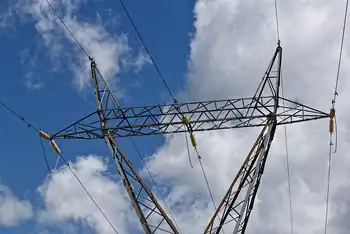OttawaÂ’s double standard on energy
OTTAWA, CANADA - The federal government spends billions of dollars every year on the nationÂ’s energy sector, except, that is, on the portions that happen to be in Ontario. It is in CanadaÂ’s interest that the federal approach to energy support the sector in all regions, including Ontario.
Right now, the federal governmentÂ’s energy strategy is heavily tilted toward investing in the oil and gas sector.
In British Columbia, Saskatchewan and Alberta, carbon capture and sequestration, a technology to reduce greenhouse gases emitted from coal-fired power plants and the oil and gas industry, received $1.4 billion in recent federal budgets.
An estimated $2 billion in subsidies flows to the oil and gas industry every year through special treatment of oil and gas corporate taxes. This includes $300 million per year for just one oilsands tax break that is finally being phased out. Ottawa also sent more than $6 billion to Newfoundland and Labrador and Nova Scotia in offshore accords to prevent their equalization payments from reflecting the reality of their oil and gas wealth.
This year, Ottawa committed to ensuring that Quebec would be entitled to the revenues flowing from a federal resource — potential offshore oil and gas in the Gulf of St. Lawrence. The Conservatives also promised to provide loan guarantees to help Newfoundland and Labrador with its $6.2 billion Muskrat Falls hydroelectricity project.
The federal governmentÂ’s energy strategy is a regional one, supporting the unique energy mix and needs across the country. What is striking, though, is the lack of support to OntarioÂ’s energy sector.
This does not mean Ontario has never received a nickel from the federal government for energy. Ontario receives a share of national programs, such as federal subsidies for renewable power generation and for homeowners to buy more energy-efficient heating and cooling equipment. But unlike other provinces, there is no large-scale federal regional strategy for OntarioÂ’s energy needs.
Ontario is the home of Canada’s nuclear energy industry, the home of Canada’s auto manufacturing industry — the industry that could build a world-class Canadian electric vehicle industry — and is undergoing an $87-billion dollar transformation of its electricity system. If the federal government is interested in funding an Ontario energy strategy comparable to the billions provided to oil and gas provinces, what could such a strategy look like?
There are three options of the necessary scale and long-term nature to justify a multi-year, multi-billion-dollar federal commitment.
If we want to be world nuclear technology leaders, CanadaÂ’s homegrown nuclear technology requires a substantial and long-term commitment. Current support of hundreds of millions of dollars per year is well below the billions committed to the oil and gas sector and about a third of what is needed to just keep up with a world leader, such as France, much less make up for decades of low investment.
Option two, investing billions in electric vehicle and battery technology development and manufacturing, would establish a strong position for CanadaÂ’s manufacturing industry in meeting the worldÂ’s growing demand for electric vehicles and batteries.
Option three, investing in an expanded east-west electricity grid through Ontario, would build on CanadaÂ’s hydropower advantage and connect more resources to Ontario consumers. Resource owners, primarily in Quebec and Manitoba, would benefit from greater transmission capacity into OntarioÂ’s market, and Ontario consumers would benefit from more affordable clean power options.
The Conservative partyÂ’s promises to invest more in clean energy are welcome. They could form part of a national energy strategy and Ontario should be in line for its share of funding. But such promises are not comparable to the targeted support provided to oil and gas provinces.
Ontario has aspirations to become a leading green economy in North America and the province has kicked in billions to this end, while the federal government has provided billions to other energy priorities. Where is the federal energy strategy — and investment — for Ontario?
Related News

N.S. senior suspects smart meter to blame for shocking $666 power bill
HALIFAX - A Nova Scotia senior says she couldn't believe her eyes when she opened her most recent power bill.
Gloria Chu was billed $666 -- more than double what she normally pays.
As someone who always pays her bi-monthly Nova Scotia Power bill in full and on time, Chu couldn't believe it.
According to her bill, her electricity usage almost tripled during the month of May, compared to last year, and is even more than it was last winter.
She insists she and her husband aren't doing anything differently -- but one thing has changed.
"I have had a problem since they put the…




